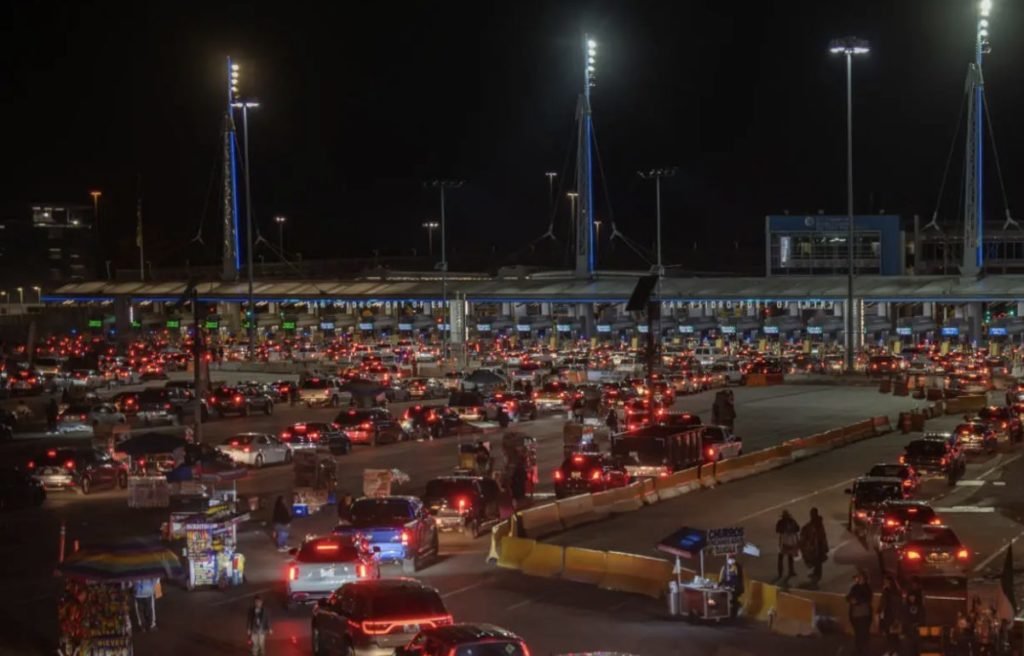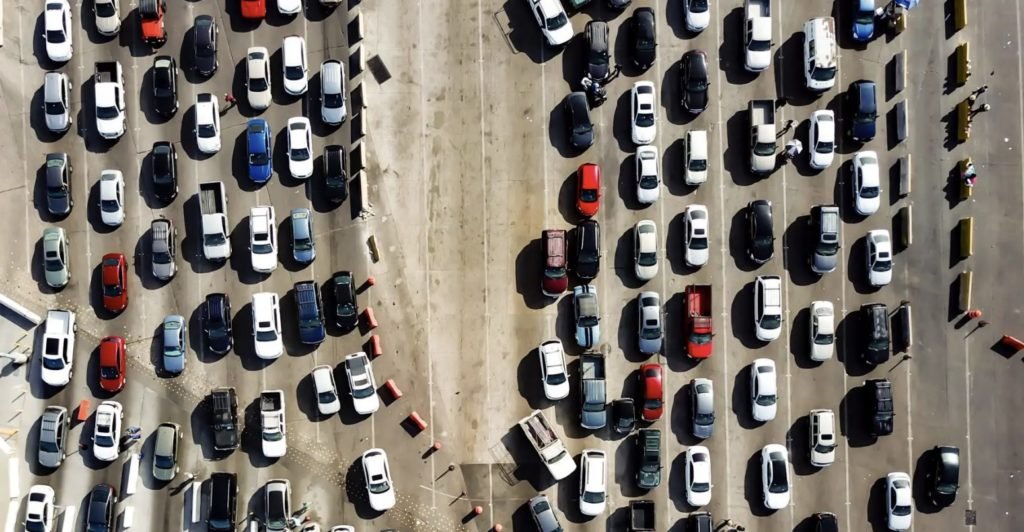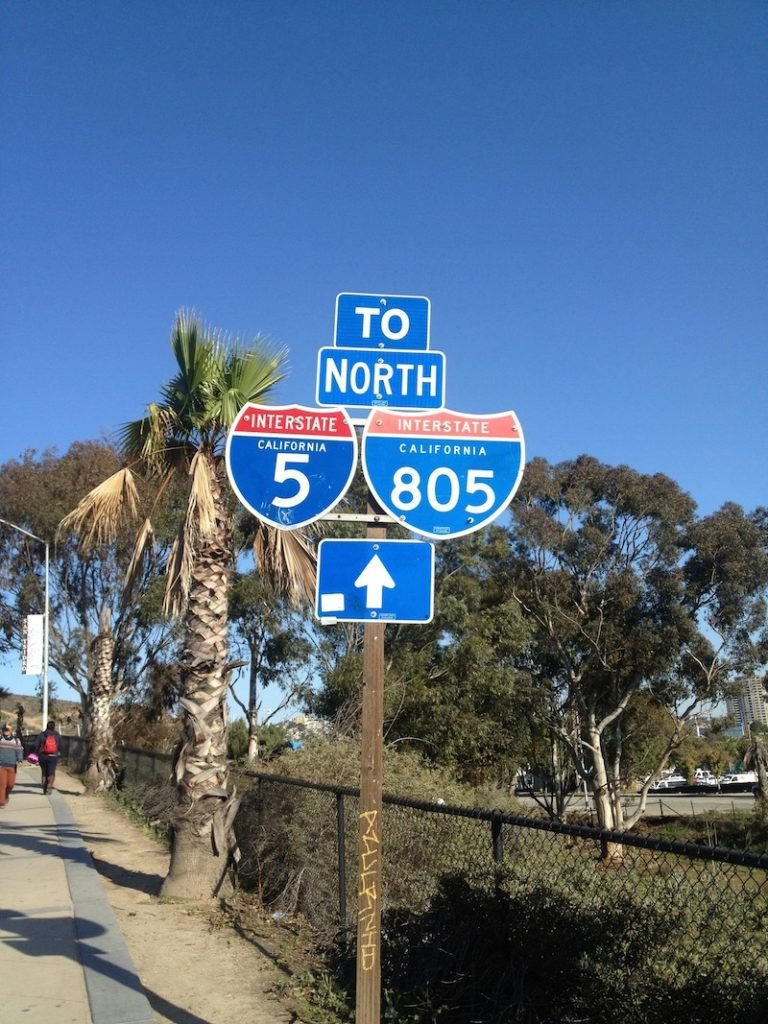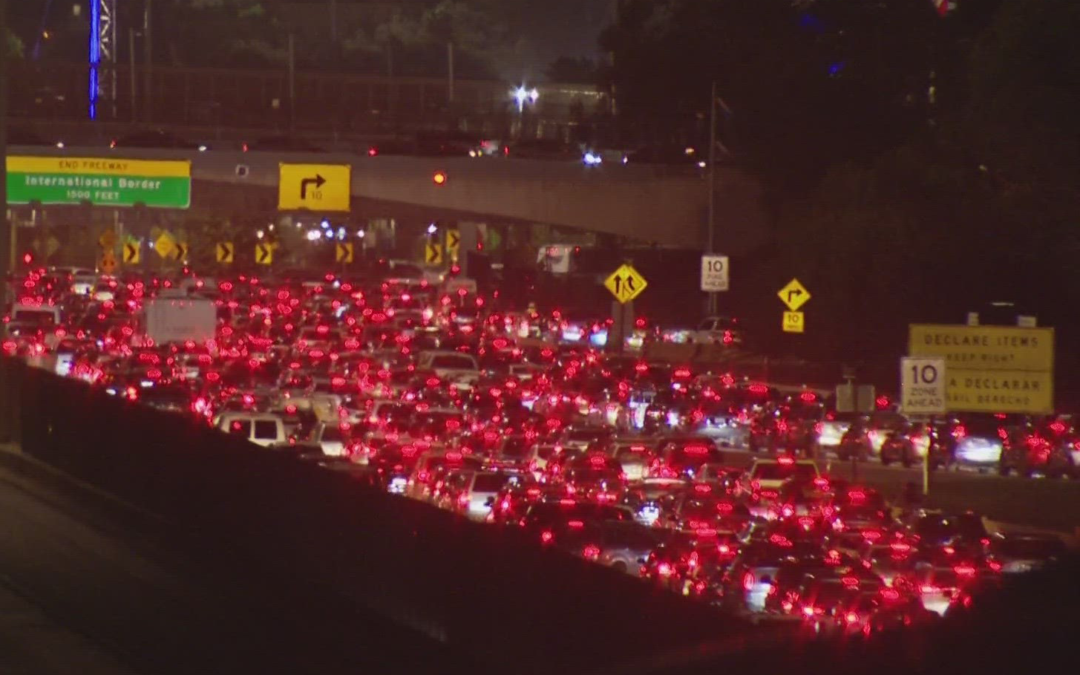My Journey Through San Diego-Tijuana Border Crossing Delays
As I recently embarked on a seemingly straightforward journey from Chula Vista to Tijuana for a dinner meeting with friends, little did I anticipate the ordeal that awaited me at the San Diego-Tijuana border crossing. Armed with plenty of time to spare, I set out on the familiar route, typically a brief 15-minute drive to our chosen restaurant. However, as I approached the border, it became evident that the journey would be anything but routine.
The once negligible wait times to cross southward, even on weeknights, have skyrocketed. I had heard about this, but not experienced it. What should have been a quick trip turned into an agonizingly protracted ordeal, stretching into an hour and a half-long odyssey of frustration and exhaustion. Fatigued from a grueling day at work, the long delay only exacerbated my weariness.
Amidst the many vehicles idling in the sea of bright red tail lights, I couldn’t help but observe the noticeable impacts of these delays on the collective psyche of other travelers. Tensions ran high, with emotions teetering on the brink of road rage. Gripping the steering wheel tightly, drivers navigated the chaos with a sense of urgency bordering on desperation. The symphony of honking horns and the acrid scent of exhaust filled the air, transforming the mundane yet very familiar act of crossing a border into a harrowing ordeal reminiscent of navigating an alligator-infested river in the Serengeti. I’d have a better chance of surviving that! I thought to myself.
Beyond an Inconvenience
It became glaringly apparent that these delays were not merely inconveniences; they were symptoms of a larger systemic issue. The ever-growing need for individuals to work in the U.S. while residing in Mexico, driven by the exorbitant cost of living in California, has overwhelmed the border infrastructure, particularly on the Mexican side. The result is a bottleneck of epic proportions, straining the patience and resources of those caught in its grip.
In this crucible of frustration and exhaustion, it dawned on me that the impacts of these delays extend far beyond mere inconvenience. They exact a toll on mental health, fueling stress, anxiety, and despair. They breed a culture of impatience and aggression, where every minute lost becomes a battle against an unyielding tide of congestion.
As I thought about the implications of my experience, I realized that the story of my journey was not merely a personal anecdote but a microcosm of a larger narrative—one that encompasses the economic, health, and environmental ramifications of border crossing delays. It is a story that begs to be told, for it speaks to the shared struggles of countless individuals whose lives are irrevocably shaped by the inefficiencies of our border infrastructure.
Tijuana’s Explosive Population Growth

Border delays have only been growing.
The population growth in Tijuana is the result of two converging migration patterns: a steady influx of individuals moving northward in search of work and opportunities near or across the border, and a surge of Californians relocating southward due to the allure of more affordable housing options. In 2020, the population of Tijuana reached 2.1 million habitants and that number has likely been surpassed due to this phenomenon.
This dual migration dynamic has sparked an explosive demographic expansion in the region, transforming Tijuana into a bustling hub of activity. However, as the pandemic exacerbated economic disparities and housing shortages, the influx of migrants from California intensified, further fueling the city of Tijuana’s rapid growth. It is estimated that about 200,000 people commute between Baja and San Diego regularly.
As a consequence of this population surge, the border crossings now face additional pressures from the influx of southward commuters. Heightened security measures on the U.S. side have led to significant delays and congestion for those journeying north, while inadequate infrastructure and poor design at the Chaparral crossing have exacerbated traffic woes for those heading south, contributing to chaotic scenes during peak times.
The challenges posed by this population growth show the urgent need for comprehensive reforms and infrastructure investments to facilitate smoother cross-border mobility. Addressing the deficiencies in border infrastructure and streamlining the crossing process are key to alleviate congestion and ensure the efficient movement of people and goods between Tijuana and California. Moreover, collaborative efforts between governmental agencies on both sides of the border are essential to effectively manage the complexities of migration and sustainably accommodate the region’s burgeoning population.
But how exactly is this impacting commuters and the border communities along the San Diego-Tijuana region?
Unveiling the Economic, Mental Health, and Environmental Impacts

The delays impact both sides of the border in many ways.
The economic toll of border crossing delays is staggering, with businesses and industries on both sides of the San Diego-Tijuana border bearing the brunt of the repercussions. According to a report by the San Diego Association of Governments (SANDAG), delays at the San Diego-Tijuana border crossings cost the regional economy approximately $3.4 billion annually. These delays not only disrupt supply chains and hinder trade but also deter tourists and impede cross-border commerce. In fact, the San Diego Chamber of Commerce estimates that border delays cost the local economy over $2 billion annually.
Additionally, prolonged border crossing delays take a significant toll on individuals’ physical and mental well-being. The stress, anxiety, and exhaustion experienced by travelers waiting in endless queues can lead to a myriad of health issues. According to a study published by UABC, frequent border crossers reported higher levels of stress, fatigue, and irritability compared to non-crossers. Research shows that long border delays the risk of experiencing symptoms of depression and anxiety, highlighting the detrimental impact of border delays on mental health. We’re already experiencing mental health crisis in the Unite States!
Finally, the environmental consequences of traffic congestion and idling vehicles at the San Diego-Tijuana border crossings are profound. According to data from San Ysidro Port-Of-Entry Community Air Study, border delays contribute to significant air pollution and carbon emissions, exacerbating air quality issues in the region. Idling vehicles emit harmful pollutants such as nitrogen oxides (NOx) and particulate matter (PM), which have been linked to respiratory ailments and cardiovascular diseases.
A study published in Environmental Health Perspectives found that air pollution levels near the San Ysidro border crossing exceed federal standards, posing health risks to nearby residents. For example, the International Border Community Air Monitoring Plan states that children living in these communities experience higher rates of asthma due to prolonged exposure to airborne pollutants. Additionally, the increased traffic congestion and emissions contribute to climate change, further underscoring the urgent need for sustainable solutions to mitigate the environmental impact of border delays.
But who is at fault?
Assessing Infrastructure Shortcomings
As travelers endure the persistent challenges of border crossing delays, it is clear that the infrastructure and planning surrounding border operations are sorely lacking. I am not a civil engineer or an infrastructure planner, but the deficiencies in design, particularly in the southbound crossing into Tijuana by El Chaparral, reflect a huge oversight by the Mexican government. The congestion and chaos experienced at El Chaparral highlights the urgent need for investment and foresight to address a growing demand of cross-border travel.
Furthermore, the prolonged delays of bridge repairs on the Mexican side raises questions about the timeliness and efficacy of infrastructure maintenance efforts. Such delays not only disrupt traffic but also call into question the effectiveness of government oversight and resource allocation. Moreover, the absence of additional crossings, underscores a failure to anticipate and accommodate the region’s growing population and economic activity. The East Otay Port of Entry border crossing is still far from completed.
The complexities of border infrastructure, the challenges faced at the San Diego-Tijuana border are compounded by broader socioeconomic factors. The exorbitant cost of living in California, coupled with a severe lack of affordable housing, has driven many individuals and families to seek alternative living arrangements across the border in Tijuana.
As California continues to grapple with its affordability crisis, the border region serves as a microcosm of the broader socioeconomic challenges facing the state and underscores the need for comprehensive solutions to address housing affordability and economic disparity.
Navigating the Border: What can you do?

Not much change is expected in terms of imoroving delays.
While structural changes to border infrastructure may be slow in coming, individuals can take proactive steps to alleviate the impact of border crossing delays on their daily lives. Embracing alternative transportation options, such as carpooling or utilizing public transit, can help mitigate the frustration of gridlocked traffic.
Additionally, enrolling in pre-screening programs like SENTRI or Global Entry can expedite the border crossing process, reducing wait times for frequent travelers. Embracing technology-driven solutions, such as mobile apps that provide real-time traffic updates and border wait times, can empower commuters to make informed decisions and navigate the border more efficiently. While systemic change may be elusive, individuals can take control of their commute by adopting these practical strategies to minimize stress and maintain their well-being amidst the challenges of border crossing delays.
The Future of Border Crossing Remains Bleak
Unless something dramatic happens, and many factors are dramatically reversed, the future outlook for border crossing delays remains bleak. While this future opening of the East Otay Port of Entry may provide some relief, it is insufficient to address the systemic issues plaguing border operations. Without decisive measures and collaborative efforts, border crossing delays are poised to persist, imposing significant social, economic, and environmental costs on both sides of the border.
Addressing the root causes of border congestion requires comprehensive reforms and substantial infrastructure investments. This includes reimagining and modernizing the existing border crossings, particularly El Chaparral and the Otay Border Crossing. Innovative and visionary ideas like the creation of an international public transportation train or corridor and investing in alternative modes of transit are essential to alleviate pressure on existing crossings. A subterranean crossing maybe? Just a thought.
However, without a concerted commitment to reform and cooperation, the prospects for meaningful change will remain uncertain. We need to prioritize the modernization and optimization of border infrastructure to ensure the efficient and sustainable movement of goods and people across the border.
If these issues are successfully resolved, the modernization and optimization of border infrastructure would lead to several positive outcomes. Firstly, it would result in significantly reduced wait times and congestion at border crossings, facilitating smoother and more efficient movement of goods and people between countries. This, in turn, would boost economic activity and trade, fostering increased collaboration and growth between border communities.
Additionally, improved border infrastructure would enhance transportation networks and connectivity, making cross-border travel more accessible and convenient for individuals and businesses alike. Furthermore, by promoting sustainability and efficiency, the modernization of border infrastructure would contribute to environmental conservation efforts and mitigate the negative impacts of congestion on local ecosystems. Ultimately, prioritizing the modernization of border infrastructure would not only address immediate challenges but also lay the foundation for a more interconnected, prosperous, and sustainable binational region.
A Way of Life

Crossing the border for many is a way of life.
In the journey from frustration to foresight, my exploration of the San Diego-Tijuana border crossing delays has revealed a tapestry of challenges that extend far beyond mere inconvenience. From the economic toll on businesses to the toll on mental and physical health, and the environmental repercussions of congestion, the impacts are manifold and undeniable.
As I circle back to where we began, stuck in the snarl of traffic, it becomes clear that urgent action is needed to break free from this cycle of inefficiency and strife. Not for me, but for the tens of thousands of individuals that make the commute everyday.
To restore efficiency and humanity to cross-border travel, we must first acknowledge the complexity of the issues at hand. This requires a concerted effort to address not only the immediate symptoms but also the underlying systemic challenges that perpetuate gridlock at the border. Greater attention, resources, and political will are essential to catalyze meaningful change. From investing in modern infrastructure to fostering cooperation between governments, the path forward demands bold action and unwavering commitment.
As I reflect on this journey, let us not forget the countless individuals whose lives are irrevocably shaped by the inefficiencies of our border infrastructure. The countess hours spend I their cars and their resilience in the face of adversity serves as a poignant reminder of the urgency of our cause.
It is time to heed their call and pave the way for a future where cross-border travel is characterized by efficiency, sustainability, and humanity. Only then can we truly unlock the potential of our shared border region and forge a path towards prosperity for all.











0 Comments